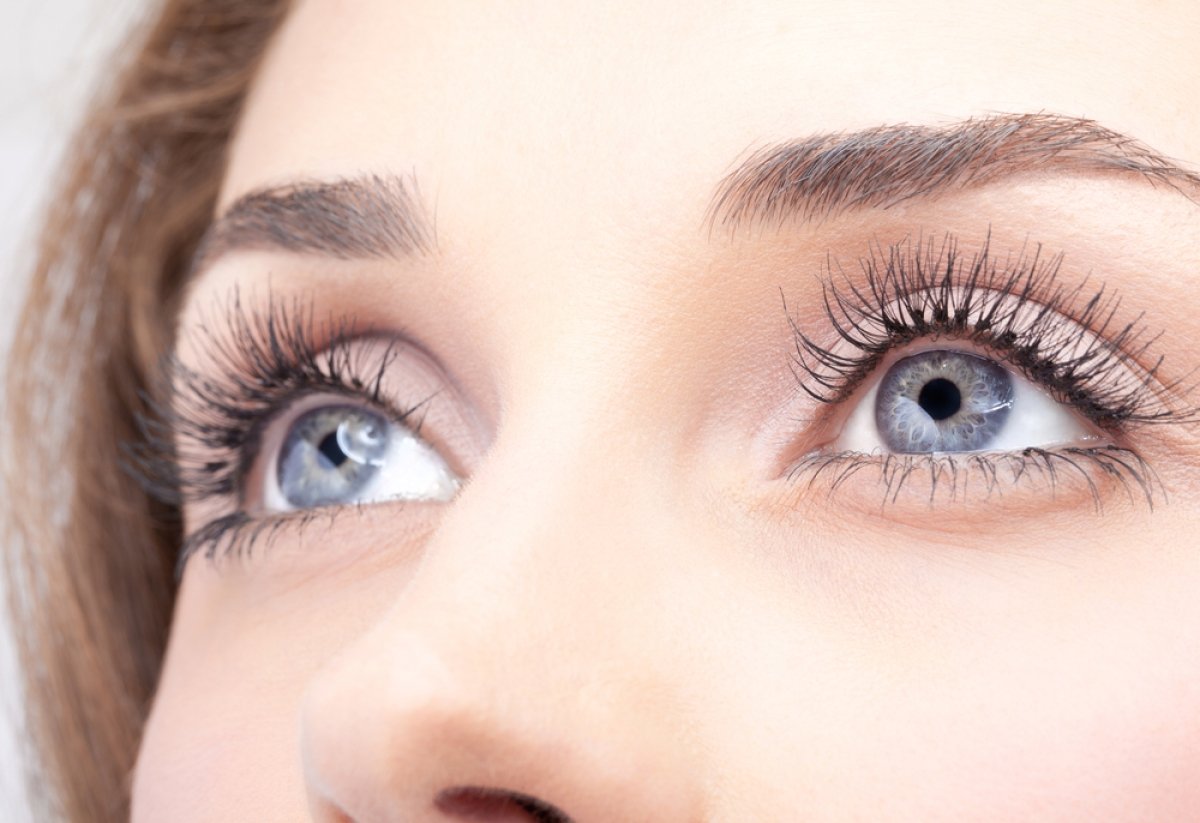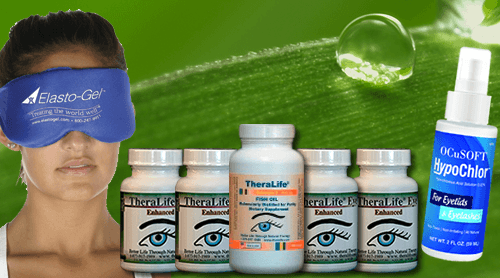To manage chalazion symptoms effectively, consider using TheraLife’s products, which offer natural and holistic approaches to eye health. TheraLife provides solutions that focus on reducing inflammation and improving overall eye wellness, thereby addressing symptoms like mild eyelid redness and firm lumps. Their products can help prevent recurrences, especially if you’ve experienced chalazions before. TheraLife’s offerings are particularly beneficial for those seeking alternatives to traditional treatments, as they emphasize natural ingredients and comprehensive care. For more information on how TheraLife can assist with eye conditions, explore their range of services and products.
Key Takeaways
- Look for a firm, small lump on the eyelid, typically painless with mild redness and swelling.
- Note any eye irritation or discomfort, often mild and short-lived.
- Check for blurred vision or visual obstruction, which may indicate a larger chalazion.
- Observe dry eye symptoms, such as irritation or inflammation, due to blocked oil glands.
- Monitor for symptoms of recurrence, especially if linked to conditions like rosacea or blepharitis.
Recognizing Eyelid Redness
How can you distinguish the subtle signs of a chalazion from other eyelid conditions? Focus on eyelid inflammation, particularly mild redness.
Chalazion-induced redness is typically less intense than that of a stye, often presenting as a red or pink area specifically over the blocked meibomian gland. This redness may extend across the eyelid or surrounding skin, primarily in the mornings, due to inflammation. Unlike styes, the redness here remains confined to the cyst area and is generally milder. It indicates the body’s response to the gland blockage. Chronic inflammation from Dry Eye Syndrome may lead to complications like chalazia. Observing these subtle redness causes can help you identify a chalazion early. Poor eyelid hygiene can contribute to the blockage of Meibomian glands, leading to the formation of a chalazion.
Identifying Initial Pain
When identifying the initial pain of a chalazion, you might notice that the discomfort is usually mild and short-lived, often resolving within a few days. Pain types can include tenderness or mild irritation, possibly accompanied by redness and swelling. While some chalazions don’t cause pain initially, others might press against the eyeball, leading to discomfort. Chalazions are caused by blockage of the meibomian glands, and this blockage can lead to the inflammation and formation of a granuloma. Applying a warm compress regularly can help alleviate symptoms and promote healing. It’s essential to differentiate this initial mild pain from more severe pain types that could indicate infection. For effective pain management, monitor any changes in redness or swelling. If the pain intensifies or persists, seek medical evaluation. A healthcare provider can assess the pain and determine if further intervention is necessary, ensuring thorough care and preventing potential complications.
Noticing Lump Formation
Ever noticed a small, firm lump on your upper eyelid? This could be a chalazion, which often forms due to a blockage in the meibomian glands. These glands, found inside the eyelid, can accumulate oil, leading to swelling. Unlike a stye, chalazion causes aren’t linked to infection, but rather a blockage. Chalazia may appear painless, with mild redness and swelling, especially in the morning. They can grow to the size of a pea and might press against your eyeball, affecting vision. While they aren’t inherently painful, discomfort or increased tearing can occur. For diagnosis, an eye doctor will conduct a clinical assessment. Chalazia are more common in individuals with chronic blepharitis or seborrheic dermatitis. Most chalazia resolve in under a month with home treatment, such as warm compresses, which help unblock the oil glands. Treatment options range from warm compresses to surgical removal if it doesn’t resolve naturally.
Monitoring Growth Changes
When monitoring a chalazion, regularly track its size progression, noting any increase or decrease over time. Pay attention to swelling patterns, particularly if the area becomes more swollen in the mornings or after specific activities. Additionally, observe any symptom fluctuations such as temporary blurred vision or tenderness, which might indicate changes in the chalazion’s condition. Consistent use of warm compresses can help facilitate the natural resolution of chalazia by promoting drainage and reducing inflammation. Chalazia often resolve naturally over weeks to months, especially in individuals aged 30-50, and this typical timeframe should be kept in mind while monitoring any changes.
Track Size Progression
To effectively monitor chalazion size progression, focus on measuring changes in its horizontal width, as this offers a reliable indicator of growth changes. Warm compresses are an important non-invasive approach that can help promote drainage and reduce chalazion size over time. Use chalazion measurement techniques, such as taking regular photos, to facilitate size comparison. Document changes meticulously, noting any reduction or increase in width. Chalazia can vary in size, being small or large, and are common in adults but can occur at any age. Although volume measurement is ideal, it’s challenging to assess accurately, so horizontal width remains the standard. Define complete resolution as a 100% reduction in size. Regularly track these dimensions to gauge healing. Monitoring size reduction will also help you determine if treatments are effective or if further medical evaluation is needed.
Note Swelling Patterns
Identifying swelling patterns in a chalazion can be essential for effective monitoring and management. Pay attention to the swelling location, typically on the upper or lower eyelid due to a blocked oil gland. Initially, you’ll notice a tender, red swelling lasting a few days. After this initial swelling duration, the area may develop into a painless lump, which can slowly grow over a week or more. Swelling is usually localized, but watch for significant changes that might indicate infection. Chalazia can vary in size and, in rare cases, progress to an external lesion that bursts. Regular eyelid hygiene is recommended to prevent recurrence and maintain healthy meibomian gland function. It’s important to note that most chalazia are painless, but they can grow to be pea-sized and last for several weeks. Monitoring these patterns helps you understand the chalazion’s growth stages and anticipate potential complications, such as vision impairment from larger growths.
Observe Symptom Fluctuations
As you monitor a chalazion, paying close attention to symptom fluctuations is essential for understanding its progression.
Begin with chalazion management by meticulously tracking changes in size; they may initially seem minor but can expand to 2-8 mm, occasionally affecting vision. Daily variations are common, so document these shifts. Regular warm compresses can assist in loosening the blockage and promoting drainage, aiding in symptom management.
Symptom tracking should also include tenderness and discomfort levels. While tenderness typically subsides, it could intensify if secondary inflammation occurs. Note any redness and swelling, especially if they spread beyond the eyelid. These symptoms generally diminish as healing progresses. Since a chalazion results from a blockage in one of the small oil glands near the eyelashes, it’s important to address these symptoms early to prevent further complications.
Monitor for vision disturbances, such as blurred vision or astigmatism, caused by pressure on the cornea. Addressing these fluctuations promptly aids in effective chalazion management and prevents complications.
Assessing Vision Impact
How does a chalazion affect your vision? A chalazion can lead to blurred vision and visual obstruction, especially if it presses against your eyeball or cornea. Conduct a vision assessment if you notice these symptoms. Eye irritation, watery eyes, and discomfort in the eyelid area are common indicators. If left untreated, complications like inflammation and dry eye issues can arise, affecting your tear film and visual clarity. Since mild cases of chalazion may resolve on their own, early intervention can help prevent significant vision problems. Treatment options range from observation to surgical interventions, depending on the severity. Chalazion is a part of the Meibomian gland dysfunction spectrum, and addressing dry eye symptoms may reduce chalazion occurrences.
| Symptom | Cause | Impact on Vision |
|---|---|---|
| Blurred Vision | Pressure on the eyeball | Impaired visual clarity |
| Visual Obstruction | Large size of chalazion | Obstructed vision |
| Dry Eye Issues | Blocked meibomian glands | Blurred vision |
Considering these factors is essential for effective management.
Distinguishing From a Stye
While chalazions and styes may appear similar, key differences can help distinguish one from the other.
Stye characteristics include painful, red lumps along the eyelash line, often containing yellowish pus. They result from bacterial infections in the eyelid glands or hair follicles. It’s important to note that styes can resolve within 7 to 10 days with the appropriate home treatment, such as warm compresses.
In contrast, chalazions are firmer, larger, and located further from the eye, typically on the top eyelid or below the bottom lash. They arise from blocked oil glands and usually aren’t painful. Chalazions can persist for weeks or months without treatment, highlighting the importance of early intervention to prevent chronic inflammation.
Chalazion treatment involves warm compresses to promote drainage, while styes might require antibiotics due to infection risks.
Both conditions may necessitate surgical drainage if persistent. Understanding these distinctions aids in proper management and prevents complications, enhancing the effectiveness of chalazion treatment strategies.
Understanding Recurrence Signs
Recognizing the distinctions between chalazions and styes sets the stage for understanding the signs of recurrence. Chalazion triggers often include underlying conditions like rosacea, blepharitis, and meibomian gland dysfunction. Recurrence management requires vigilance, as 53.8% of chalazia recur within six months post-surgery. Identifying patterns such as recurrence on the same eyelid helps you anticipate potential issues. Clinical diagnosis involves eyelid exams, with no specific tests needed. Prevention strategies, such as hot compresses and eyelid massage, promote drainage and reduce recurrence risk. Considering steroid injections after incision and curettage (I&C) can be beneficial. Since 69.2% of chalazia recurrences occur on the same eyelid as the original, targeted follow-up care is crucial. Treating any associated conditions is essential. Early intervention and regular follow-up care can greatly enhance recurrence management, minimizing the chances of chalazion reappearance. Persistent chalazia may indicate more serious health issues such as skin cancer, necessitating further evaluation.
Frequently Asked Questions
How Long Does a Chalazion Typically Last Before Resolving?
You might wonder how long a chalazion lasts before resolving.
Typically, the healing timeline ranges from 2 to 8 weeks, influenced by several duration factors. These factors include the chalazion’s size, your body’s individual healing response, and how quickly you begin treatment.
Regular warm compresses and good eyelid hygiene can expedite recovery.
However, if it persists or worsens, consulting an eye specialist is essential for further evaluation and treatment.
Can a Chalazion Lead to Complications if Untreated?
Imagine a benign bump taking an unsightly turn. An untreated chalazion can lead to complications like blurred vision or infections.
If ignored, it might result in serious health issues such as eyelid scarring or infections like periorbital cellulitis.
Complications from an untreated chalazion include painful swelling and vision changes.
To avoid these risks, seek timely medical advice and practice good hygiene.
Are There Any Preventative Measures for Chalazions?
To prevent chalazions, maintain strict eyelid hygiene by regularly cleaning your eyelids and avoiding touching your eyes with unwashed hands.
Apply warm compresses daily to soften any blockages in the eyelid glands.
Guarantee proper hand hygiene and avoid sharing makeup to reduce infection risks.
Replace eye makeup every few months, and follow proper contact lens care.
What Lifestyle Changes Can Reduce Chalazion Recurrence?
To reduce chalazion recurrence, you should make specific lifestyle changes.
Prioritize dietary adjustments by increasing your intake of vitamins A, C, and E, and omega-3 fatty acids. Avoid saturated fats and maintain hydration.
Incorporate daily warm compresses to manage and prevent blockages. Practice good eyelid hygiene and avoid sharing cosmetics.
Manage underlying conditions like blepharitis.
These steps assist in minimizing the chances of developing recurrent chalazia effectively.
When Should I Seek Medical Attention for a Chalazion?
Imagine your eye feeling heavy, a stubborn bump refusing to fade.
You should seek medical attention if chalazion symptoms like severe pain or spreading swelling occur.
Chalazion treatments are essential if it doesn’t drain in 1-2 months, becomes larger, or painful.
Changes in your vision or eye movement pain are red flags.
Swift medical care can prevent complications, so consult your eye doctor promptly with any persistent or severe symptoms.
Conclusion
When identifying chalazion symptoms, it’s crucial to remember that about 25% of individuals with recurrent chalazia might experience significant vision impact due to corneal pressure. It’s important to monitor any persistent eyelid redness, initial pain, or lump formation closely. If changes in size are noted or if there’s suspicion of a stye, seeking medical advice promptly is advisable. Recognizing these signs and understanding potential recurrence can prevent complications and ensure better eye health. Early intervention is key.
Theralife.com offers products that benefit customers by providing natural solutions to various eye conditions, including recurrent chalazia. Their products are designed to alleviate symptoms and prevent recurrence, promoting overall eye health. With a focus on natural ingredients, Theralife’s offerings can be a vital part of early intervention and management of eye conditions, ensuring users maintain optimal vision and comfort.



